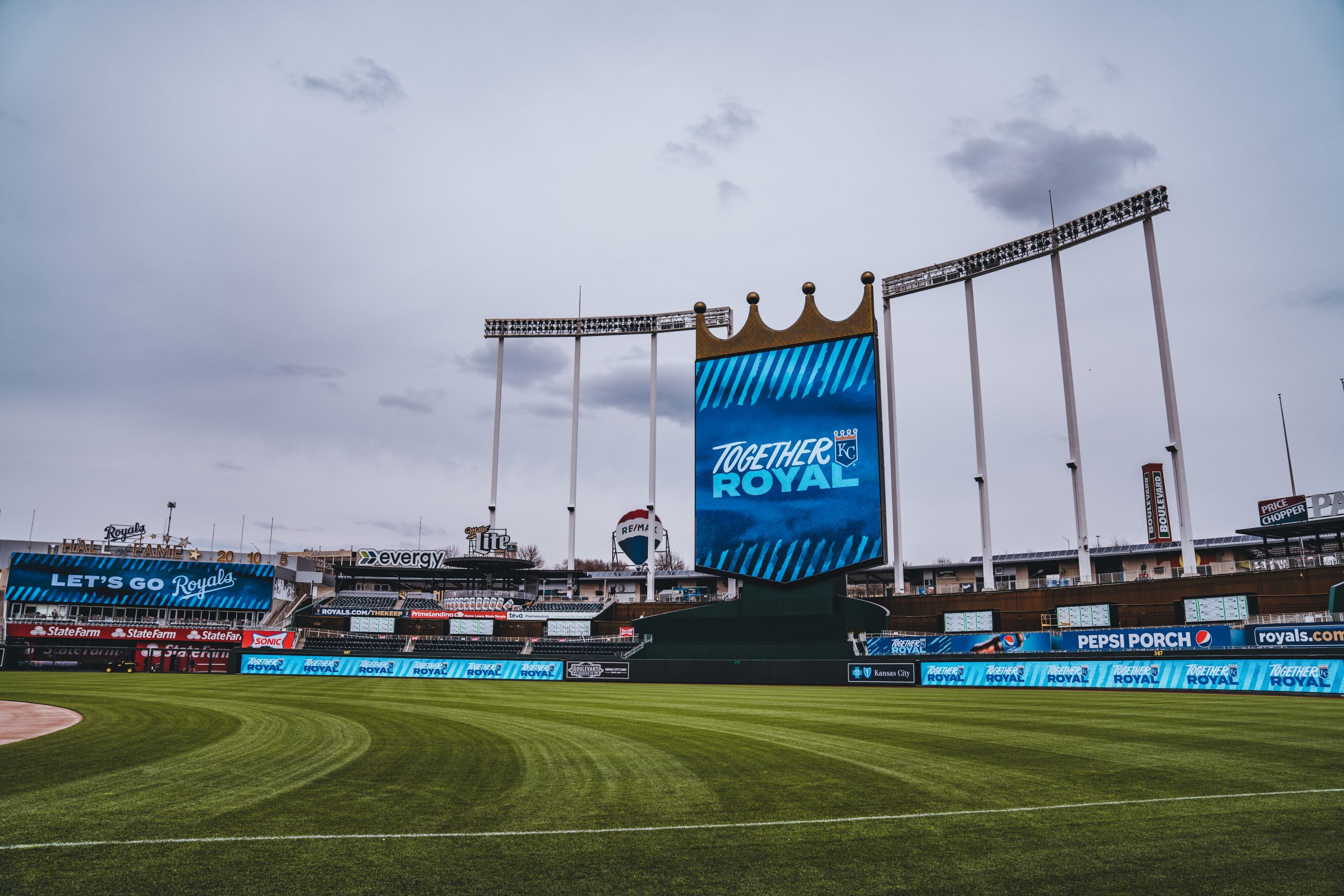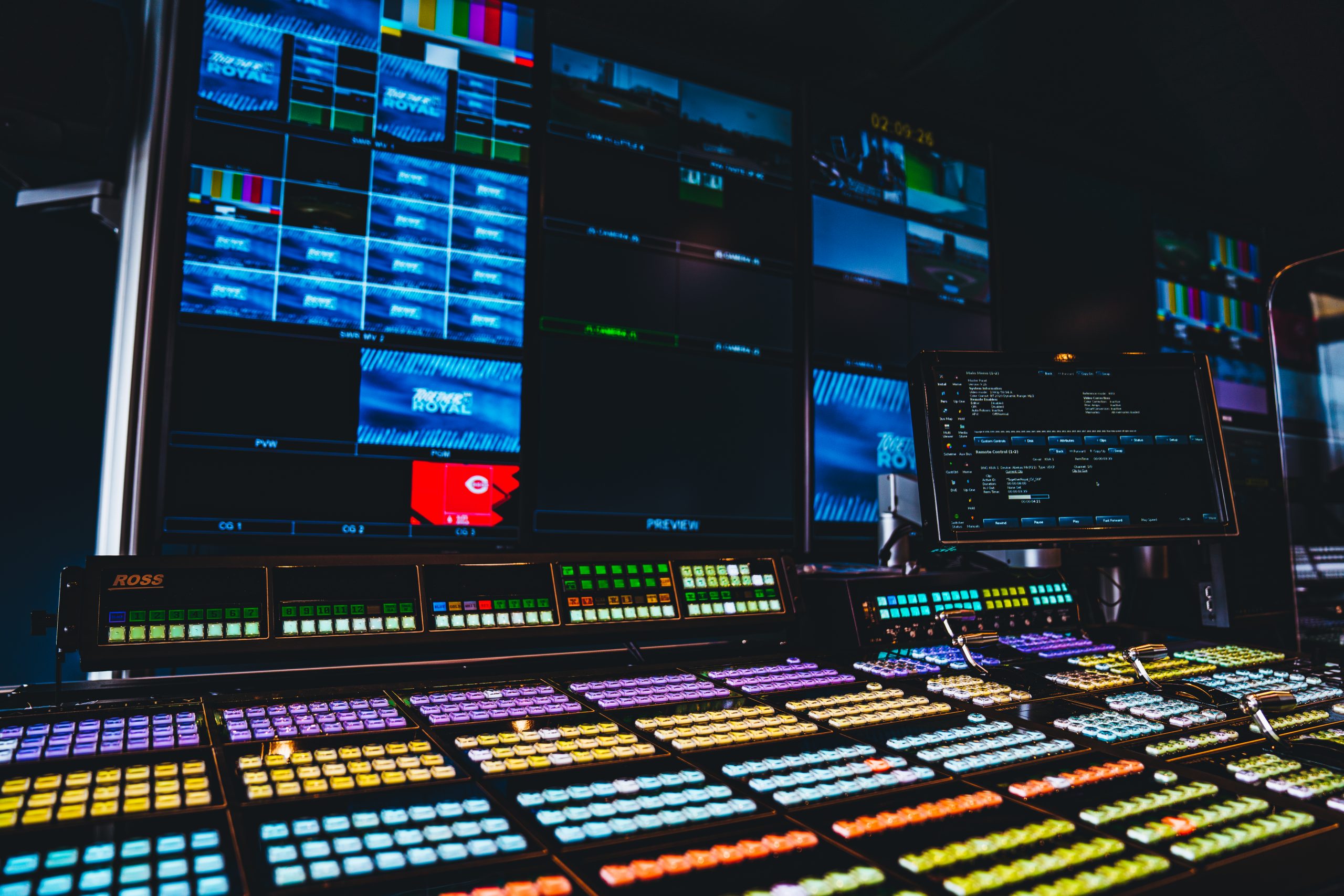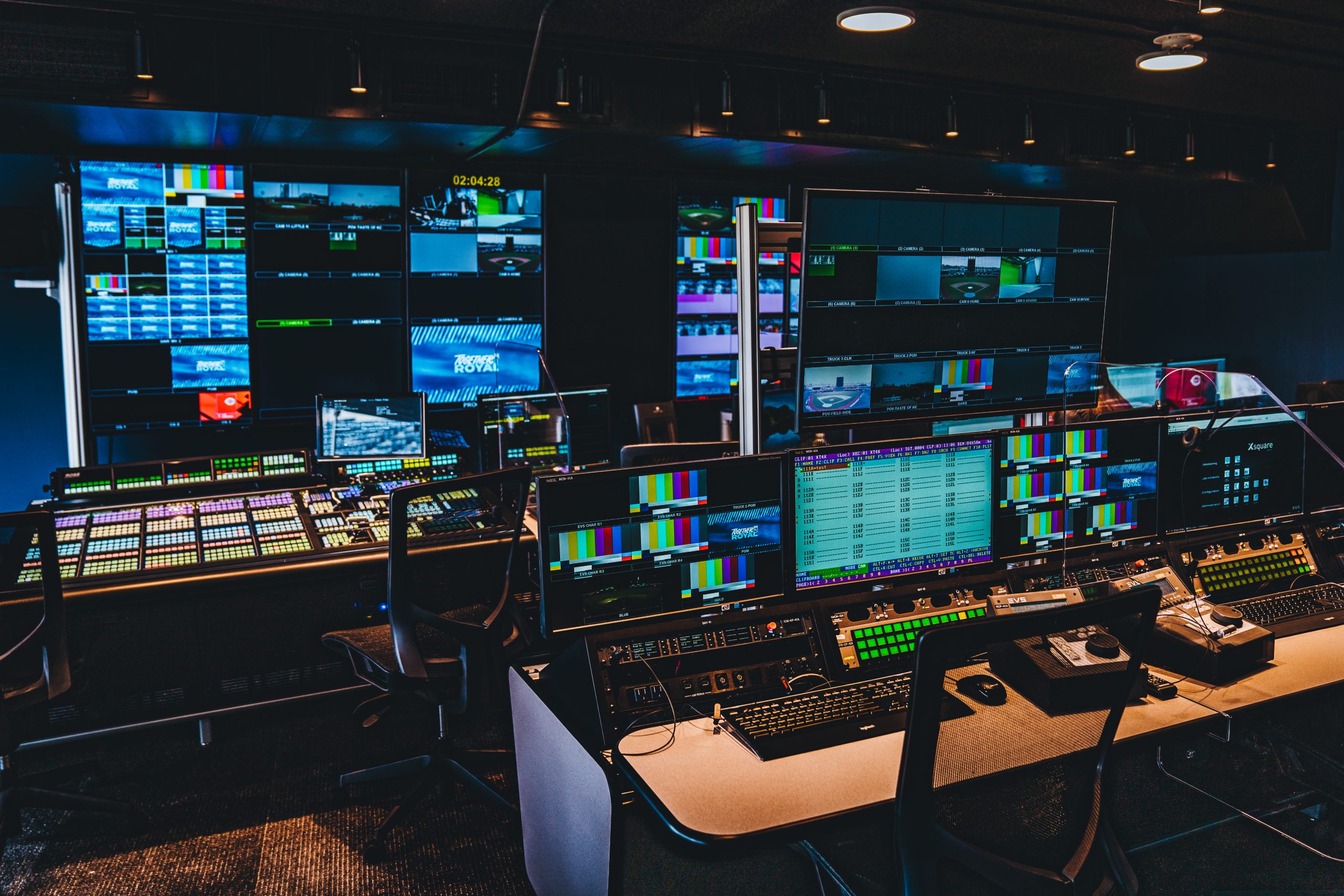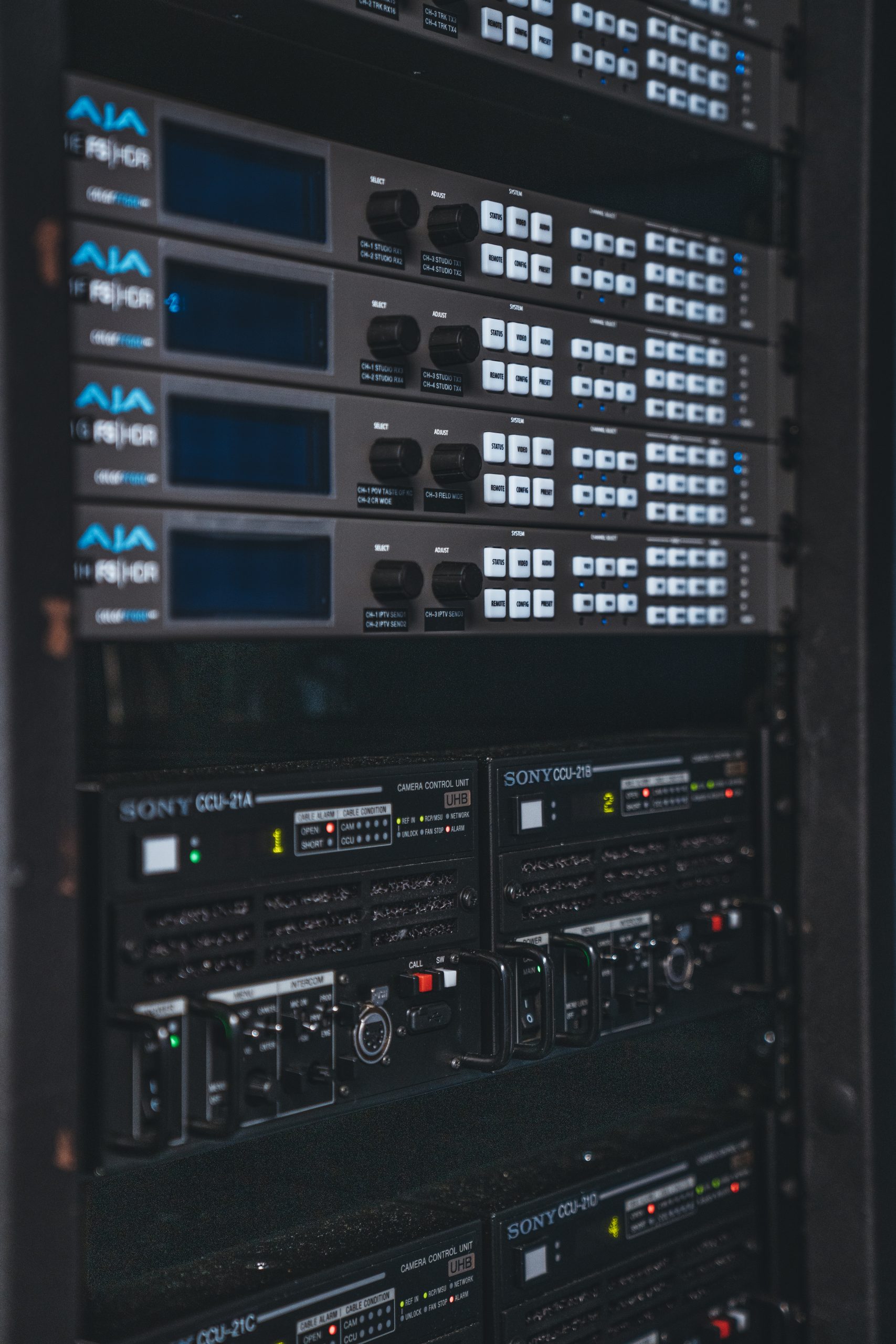Kansas City Royals Prep for Home Opener With New HDR Videoboard at Kauffman Stadium
The analytic side of baseball will be featured on displays installed in the offseason
Story Highlights
The Kansas City Royals were unable to clinch a playoff spot during last year’s 60-game MLB season, but, heading into 2021, the franchise has a lot of excitement happening on and off the field. When newly re-signed catcher Salvador Perez trots behind home plate for next week’s home opener vs. the Texas Rangers, the team will finally christen the brand-new HDR videoboard at Kauffman Stadium.
“From a fan’s standpoint, there’s going to be a lot more opportunities to take in the in-stadium experience,” says Steven Funke, director, event presentation and production, Kansas City Royals. “[This videoboard] is going to be quite an improvement from where we were before.”
Offseason Project: Construction Makes a Quick Turnaround
Kauffmann Stadium has seen its fair share of offseason projects and renovations. The previous videoboard, built prior to the 2008 home opener vs. the New York Yankees, debuted the recognizable crown atop the structure’s highest point. Thirteen years later, the crown-adorned videoboard is trading in its LED panels for ones with HDR capability. In a project beginning last November, the Daktronics videoboard was carefully installed during the cold winter months in the Midwest.
Enjoy this satisfying timelapse of our new video boards. 🤩#TogetherRoyal pic.twitter.com/ZbbdVbFABH
— Kansas City Royals (@Royals) March 23, 2021
After four months, the physical construction was complete. Measuring 105 x 85 ft. and featuring Daktronics’ 15-mm SMD technology, the league’s fourth main HDR videoboard (after the Texas Rangers’ and Cincinnati Reds’ in 2020 and Colorado Rockies’ in 2018) will have a pixel increase of 138% and eclipse a handful of in-venue achievements in the professional ranks, including the tallest videoboard in Major League Baseball.
In addition to the main videoboard, the Royals have upgraded other LED displays in the venue. The Hall of Fame display, an area located behind the left-center-field fence where retired numbers are prominently shown, will also have an HDR-capable board. This 20.5- x 108-ft. videoboard will feature 2,200 sq. ft. of LED real estate and 900,000 pixels and will be five-times larger than the ribbon board that it replaces.
In addition, two 7- x 127-ft. ribbon boards will occupy the outfield wall running from left center field to center field and right center field to center field, respectively.
Center of Crown Vision: AJA Powers HDR Backbone in Stadium Control Room

Along with the new HDR main videoboard, the franchise installed an HDR-capable Hall of Fame display and two LED screens on the outfield wall.
With a grand total of more than 5.1 million LED pixels, Kauffmann Stadium will be shining all season long. Besides this new project, Funke and his team decided to invest in new production equipment as well for the upcoming season. The space’s most important addition is an AJA FS-HDR 1RU rackmount converter/frame synchronizer, which converts the camera feeds to HDR on the videoboard. Other notable upgrades include a slate of products from Ross Video (a 5M/E Acuity production switcher, three outputs of XPression graphics, and the new Kiva live-production server), EVS XT4K and XTSK replay servers and IPDirector, Evertz EQX10 router, four Sony HDC-5500L and three PXW-Z750 cameras, Riedel Communications wireless intercom, and Wave Central wireless camera support.
These examples illustrate a massive turnover in the control room, and another technological supplement will change the way in-game prompts are designed and presented.
“The only holdover that we have from the old room are our EVS replay servers from 2018 and some experience with Ross XPression from 2017,” Funke says. “We’re bringing something new to game presentation that probably hasn’t been seen in baseball, and we’re looking forward to working with Ross Video’s Rocket Surgery to come up with a new and creative way of displaying stats.”
Similar to the project seen in Colorado, Cincinnati, and Texas, Diversified played a huge role in the process in Kansas City. With the addition of the new equipment, the Royals needed to make adjustments to the physical structure to accommodate for these changes. On Diversified’s end, Director, Sports and Live Events Stuart Reynolds drew up the plan that would allow the franchise to mix their pre-existing technologies with new tools. For the boots on the ground, including Project Engineers Matt George and Sean McFarland, employees needed to follow stringent COVID-19 protocols.
“This was a design project where we worked with the Royals to implement new workflows with some of their legacy equipment,” says Brad Fisher, senior account manager, Diversified. “We had to limit the number of installers that we had in the control room at a single time to account for social distancing.”
Along with the brick-and-mortar adaptations in the space, Diversified overcame other infrastructure challenges to make significant upgrades to air ventilation in the control room.
“The big challenge was the original layout,” adds Fisher. “The Royals had some heating and cooling issues, so we went in to develop a new method of air flow along with the structural work.”
Adjustments in Production: New Workflows, Content in Vertical Video
Large-scale renovation isn’t new to Funke, but being at the front of the line is a different perspective. The crew has used Spring Training and the remaining time in the offseason to practice, but he also made some phone calls to colleagues around the league —Colorado Rockies Senior Director, In-Game Entertainment and Broadcast, Kent Krosbakken and Cincinnati Reds Director, Productions, Jami Itiavkase — who have already dealt with this transformation.
“This was the first time that I oversaw an entire project,” Funke says, “so it has been an interesting experience. I was curious to see the pitfalls that they came across.”
And he has a bit of a roadmap to follow from those who have done an HDR implementation. Itiavkase and Krosbakken — the former having learned these new practices at the beginning of the COVID-19 pandemic, the latter having been with the first MLB team to go down this route — were invaluable resources.
“We haven’t actually gone through the process yet, but it seems like we jumped in at the right time,” Funke explains. “There was confusion with conversion of the color spectrum, but [the Reds] have figured out a workflow that makes sense.”
The Royals are experiencing the growing pains of technical change, but they’re also applying the new technology to an already challenging stylistic format: vertical video. HDR workflows will ultimately make content display a lot clearer and more precise, but the production crew will still have to reconfigure the game-day pieces to fit the unique output.
“It’s tough to build vertical video in a horizontal world,” Funke adds. “We’ve always had to deal with that, so you have to rethink everything.”
Built for the Future: Baseball Analytics in Forward-Thinking Installation
In the past 21 years, the Royals were able to capture pro-baseball glory by defeating the New York Mets in the 2015 World Series. Six years later, both the front office and in-venue production staff are laying the groundwork for even more possibilities in the City of Fountains.

Ross Video has a large presence in the control room, including 5M/E Acuity production switcher, three outputs of XPression graphics, and the new Kiva live-production server.
“We’re building a new studio on the sixth floor,” says Funke. “We’re currently on the fourth floor, but we’ll have this wonderful place to do a lot of our interviews and player-centric content that we’ve never had before. We have the ability to host live shows since it’s all connected down to the control room.”
Next month, a limited number of fans will be welcomed back to the ballpark for the first time since Sept. 29, 2019, and, walking through the turnstiles, they’ll get a glimpse of the newest in-venue technology the industry has to offer.
“We don’t want people to feel like they’re getting a better product at home on their couch,” notes Funke. “We’re looking to take the statistical aspect of baseball and bring it into the ballpark. It’s the new perspective and direction of the game, and we’re really excited about it.”


